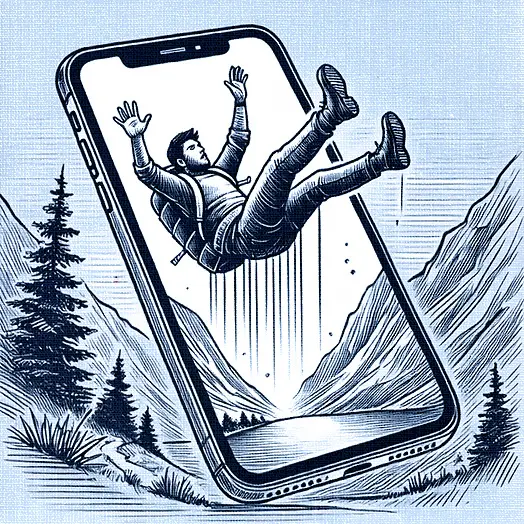Your website is more than just a digital storefront; it’s a vital tool that can drive traffic, build credibility, and generate leads.
However, without SEO optimization, even the best-designed website may struggle to attract visitors. This is where partnering with an agency for web design becomes invaluable.
By blending aesthetic design with technical SEO, a professional web design agency can turn your site into an SEO powerhouse.
Here’s how working with an agency can enhance your SEO success, improve performance, and boost digital visibility.
How an Agency for Web Design Improves Site Speed and SEO: Laying a Foundation for High Rankings

In the digital world, speed is crucial.
A slow website can quickly turn visitors away and affect search rankings. A web design agency optimizes load speed by using compressed images, minimizing coding, and choosing quality hosting services, helping to keep visitors on your site and improve SEO.
Here’s how they keep visitors and search engines happy:
- Optimizing Images: Agencies use compressed image formats like WebP to reduce file sizes without losing quality, improving load times.
- Streamlined Coding: Minimizing HTML, CSS, and JavaScript enhances load speed, creating a smoother user experience.
- Reliable Hosting: A quality hosting provider guarantees consistent performance, something an experienced agency can recommend.
Pro Tip: Search engines like Google prioritize fast-loading websites, so a well-optimized, fast site can lead to higher rankings.
The Importance of Mobile-First Design and How an Agency for Web Design Ensures Mobile Optimization

Mobile searches lead the charge. To survive, your website needs to be mobile-ready.
Imagine exploring a rugged mountainside with gear designed for flat terrain—it just doesn’t work.
Similarly, a site not optimized for mobile users won’t perform well on search engines.
Google’s mobile-first indexing prioritizes mobile-responsive sites, making mobile optimization critical for SEO. An experienced web design agency can create responsive layouts, touch-friendly navigation, and mobile speed optimizations to enhance the mobile experience.
How a Web Design Agency Enhances Mobile-First Design:
- Responsive Layouts: A web design agency ensures your site layout adapts to any screen size, delivering a consistent experience across devices.
- Touch-Friendly Navigation: Agencies prioritize usability with navigation that’s easy to interact with on mobile screens.
- Mobile Speed Optimization: Tools like Google’s Mobile-Friendly Test ensure that mobile users enjoy fast, efficient browsing.
Expert Insight: A mobile-friendly site boosts user satisfaction and SEO rankings. Working with a web design agency that prioritizes mobile-first design ensures you’re meeting the needs of both users and search engines.
Enhancing User Experience to Reduce Bounce Rates: How an Agency for Web Design Boosts Engagement

User experience (UX) is like a well-marked trail through dense forest. It should be clear, intuitive, and guide visitors where they need to go.
If your website is hard to navigate, visitors are likely to “bounce” back to search results. This signals to search engines that your site isn’t worth exploring.
An agency for web design creates intuitive navigation, engaging CTAs, and a visually appealing structure to keep visitors on-site and reduce bounce rates.
UX Strategies Used by Web Design Agencies to Lower Bounce Rates:
- Clear Navigation: Simple, intuitive menus help visitors find what they need quickly.
- Engaging CTAs: Strategic calls-to-action encourage visitors to explore more, reducing bounce rates and increasing engagement.
- Visual Appeal: Agencies use high-quality visuals and videos to break up text, making content more engaging.
Pro Tip: Reducing bounce rates can signal quality to search engines. Investing in UX-focused design from an agency keeps users on your site longer and supports SEO goals.
SEO-Driven Web Design Checklist: Expert Tips from an Agency for Web Design
A web design agency provides a comprehensive SEO-focused checklist to ensure that your website is optimized for search engine success:
- Optimize for Speed: Use tools like Google PageSpeed Insights to identify and address speed issues.
- Mobile-First Design: Regularly test mobile responsiveness with Google’s Mobile-Friendly Test.
- Intuitive Navigation: Clear menus, CTAs, and visuals help guide visitors and keep them on your site.
- SEO Best Practices: Optimize metadata, including title tags, meta descriptions, and image alt text.
- Ongoing Analytics: Track metrics like bounce rate, session duration, and conversion rates to continually improve performance.
Why Partner with an Agency for Web Design for Video Integration?
Integrating video content improves engagement and can help your site rank higher in search results.
A web design agency optimizes video for fast load times, uses SEO-friendly tags, and strategically places video content on key pages to increase user engagement and retention.
How a Web Design Agency Optimizes Video:
- Efficient Load Times: Agencies use optimized video formats and lazy loading to prevent slowdowns.
- SEO Tagging: Proper video titles, descriptions, and schema markup help search engines index your content.
- Strategic Placement: Videos are placed on key pages, such as landing and product pages, to encourage interaction and retention
Partner with Us: Our team produces high-quality, SEO-optimized videos that integrate seamlessly with your site design, maximizing both engagement and SEO impact.
Final Thoughts: How a Web Design Agency Can Pave the Way for Your Brand
Your website’s design is the foundation of SEO success. A well-crafted site does more than attract visitors; it guides them seamlessly through content, enhancing their experience while signaling value to search engines.
From fast load times and mobile-first layouts to strategic video integration, a professional web design agency can ensure your site meets modern SEO demands and keeps your brand visible, relevant, and engaging in the ever-competitive digital landscape.
SEO in web design involves optimizing a website’s structure, content, and technical elements to improve its visibility in search engine results. A well-designed site that’s optimized for SEO is easier for search engines to crawl, index, and rank, which helps attract more organic traffic.
Yes, web design has a direct impact on SEO. Factors like site speed, mobile responsiveness, user experience (UX), and content structure all play roles in how search engines rank a website. A well-optimized design can improve rankings, while a poorly optimized site may struggle to perform.
SEO web design is essential because it creates a website that appeals to both users and search engines. An SEO-optimized design enhances user experience, improves site visibility, and increases the chances of ranking higher in search results, ultimately driving more organic traffic to the site.
Web design focuses on the visual and structural elements of a website, creating a cohesive, engaging user interface. SEO, on the other hand, focuses on optimizing website content and structure for search engines to improve rankings. Effective websites integrate both, ensuring aesthetic appeal and search engine visibility.
SEO in UX design means creating a user-friendly website that’s also optimized for search engines. This includes intuitive navigation, fast loading times, and content that aligns with users’ search intent, all of which contribute to better SEO performance by keeping users engaged and reducing bounce rates.
SEO (Search Engine Optimization) is the process of improving a website’s visibility in search engine results by optimizing elements like keywords, site structure, content, and technical factors. The goal is to increase organic traffic by ranking higher in search engine results pages (SERPs).
To optimize a website for SEO, focus on keyword research, creating high-quality content, optimizing metadata (title tags, meta descriptions), improving site speed, ensuring mobile responsiveness, and building quality backlinks. Regularly updating and analyzing your SEO strategy is also essential for ongoing success.
The four stages of SEO are:
Technical SEO: Ensuring the site is accessible and crawlable by search engines.
On-Page SEO: Optimizing individual pages for keywords, metadata, and content.
Off-Page SEO: Building backlinks and social media presence to increase authority.
Content SEO: Creating valuable, optimized content that attracts and retains users.
SEO works by optimizing various elements of a website to meet the criteria search engines use to rank pages. Search engines like Google use algorithms to analyze content, keywords, user experience, and website authority to determine which sites are most relevant to user queries. Effective SEO aligns with these algorithms to improve rankings and visibility.
Let Our Agency for Web Design Guide Your SEO Success
Embarking on the journey to SEO success requires more than just knowledge—it demands experience and the right tools. At EV Agency, we’re not just digital marketers; we’re your digital marketing outfitters. We provide the maps, gear, and guidance you need to conquer the digital wilderness.


